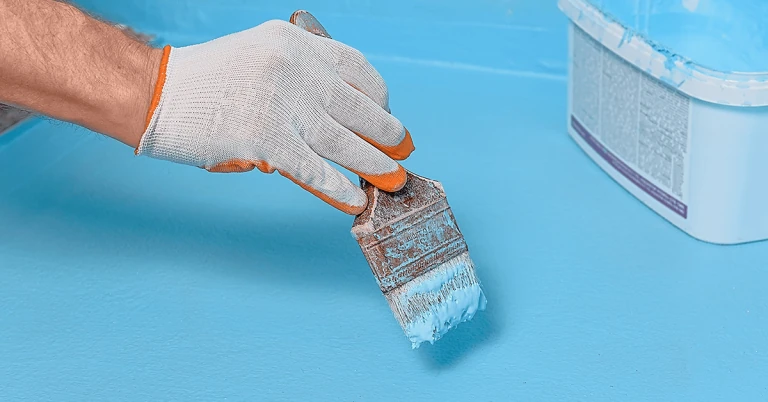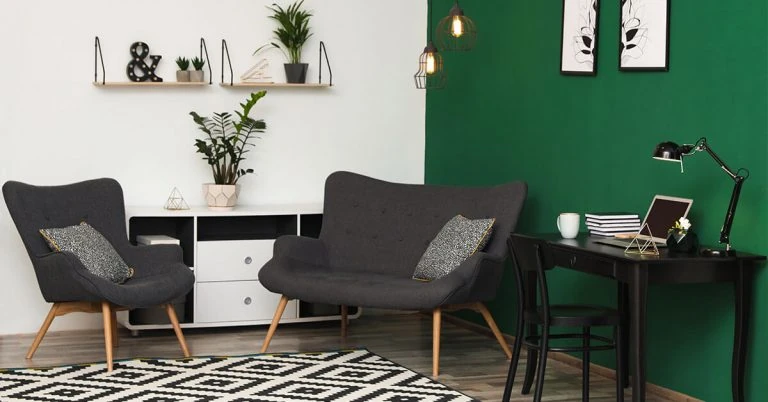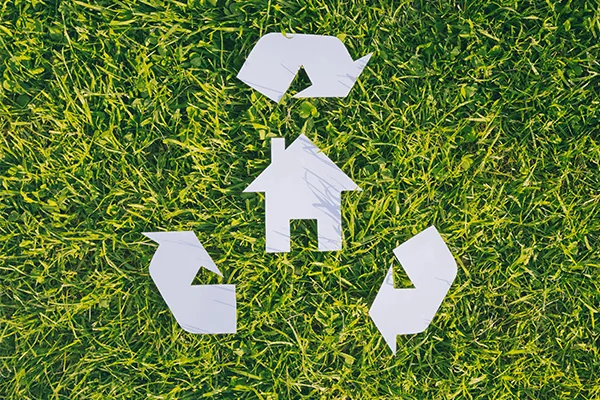Home Decorating Tips


Home Decorating Tips
It’s Time to Go Green: Sustainable Materials You Should Know
Posted on November 3, 2025
Last updated December 15, 2025
As climate concerns grow and energy costs rise, builders, architects, and homeowners are turning to smarter, greener alternatives. And, it isn’t just a feel-good move. It’s a forward-thinking decision that saves energy, resources, and money in the long run.
So what exactly should you be looking for? Here are some green materials making waves in an eco-conscious construction:
What Makes a Construction Material Sustainable?
Before exploring the list of eco-friendly materials, it’s important to understand what makes a construction material sustainable. These choices are guided by three key principles:
- Efficiency
Sustainable materials are resource-efficient. They are designed to use less, create minimal waste, and offer durability that reduces the need for frequent replacement. - Safety
A safe material minimizes harm to both people and the environment. This means reducing or eliminating toxic chemicals and considering the environmental impact across the material’s entire life cycle, from production to disposal. - Responsibility
Sustainable construction also means thinking long-term. Materials should be sourced and used in ways that protect natural resources and ensure they remain available for future generations.
By choosing these materials, you’re supporting industries that prioritize ethical sourcing and responsible manufacturing. You’re also helping to reduce your carbon footprint (total amount of green gasses released into air). As a bonus, many sustainable materials offer added benefits like durability, low maintenance, and better air quality.
Sustainable Materials You Should Know
Here are some eco-friendly building materials that you can consider for your next project.
1. Bamboo
Bamboo grows fast, needs little care, and thrives in many climates. Once harvested, it quickly regrows from its roots, unlike trees that take decades to mature. But it’s not just about speed, bamboo is also a durable material. It’s stronger than timber and even outperforms steel in tensile strength (pulling or stretching force). Despite its durability, it’s lightweight, making it easy to transport in bulk.
2. Reclaimed Wood
Reclaimed wood is wood that has been reused after being taken from old buildings, structures, or furniture, often from factories, railways, or old houses. Instead of being thrown away or burned, this wood is carefully salvaged, cleaned, and repurposed for new uses like flooring, furniture, wall panels, or decorative pieces.
It’s different from regular or newly cut wood because:
- It often comes from older trees, which means it has tighter grain
- It carries history and character, with unique marks, textures, and weathering.
- It reduces the demand for new lumber
3. Cork
Cork comes from the bark of cork oak trees, which can be harvested without cutting the tree down. This means the tree keeps growing and absorbing carbon.
Cork is naturally insulating, lightweight, and resistant to moisture and pests. Additionally, it’s great for flooring, wall tiles, and even furniture.
4. Recycled Glass
Did you know that glass can be recycled endlessly without losing quality? Recycling glass reduces energy use, and cuts harmful emissions. In fact, each ton of recycled glass saves over a ton of raw materials, lowers CO2 emissions by about 580 kg, and significantly helps reduce air and water pollution.
5. Low-VOC Paints
Many traditional paints release volatile organic compounds (VOCs) that affect indoor air quality and can cause health issues. Low-VOC or zero-VOC paints are made with fewer harmful chemicals, keeping your indoor air fresh.
6. Natural Stone
Stones like granite, slate, or limestone last for decades and require little maintenance. Moreover, sourcing stones locally helps reduce transportation emissions, making it a sustainable choice for countertops and walls.
Tips for Going Green
If you’re ready to make your home or commercial space greener, here are some steps to get started with:
- Research products before buying. Look for certifications like Lead Safe Paint®, FSC (Forest Stewardship Council), EcoWaste Coalition, GREENGUARD, or Cradle to Cradle to ensure materials meet sustainability standards.
- Ask suppliers about sourcing and manufacturing processes.
- Prioritize local materials to reduce transportation emissions and support your community.
- Mix and match sustainable materials to fit your style and budget.
- And lastly, find a building or a renovation partner that shares your values. Look for brands that prioritize sustainability, like Island Paints.
Certifications & Sustainability Practices of Island Paints
Island Paints is committed to creating products that are not only high-performing but also safer for people and better for the environment. Here are some of the key certifications and sustainable practices that reflect their dedication to responsible manufacturing:
Lead Safe Paint® Certification
Island Premium Paints is proud to be Lead Safe Paint® certified, meeting the world’s most stringent standards for low lead content. This certification assures consumers that Island Premium Paints products are safe and free from harmful levels of lead.
In addition to earning this recognition, Island Premium Paints has also been commended by the EcoWaste Coalition for its proactive efforts to eliminate lead additives and shift to safer, non-lead alternatives.
Compliance with Local Environmental Regulations
Their products comply with national regulations on hazardous substances, including strict controls on lead and other harmful chemicals.
Low-VOC and Low-Odor Paint Options
Certain product lines are specially designed with low levels of volatile organic compounds (VOCs), helping to improve indoor air quality and create a well-ventilated living environment.
Anti-Microbial Additives
Select paint lines include anti-microbial properties, helping to prevent the growth of harmful bacteria. It is ideal for spaces that require higher hygiene standards.
Your choices matter, especially when it comes to your home and the environment. By choosing Island Paints’ eco-friendly and low-VOC products, you’re not just refreshing your space, you are supporting a healthier planet and protecting your family’s wellbeing.
Whether it’s a quick touch-up or a full renovation, Island Premium Paints offers sustainable solutions that reduce harmful chemicals and improve indoor air quality. It’s never been easier to go green without compromising on quality or style.
Take pride in making your home beautiful and environmentally responsible. Choose Premium Island Paints, because every brushstroke counts towards a cleaner and greener future.
Explore more about their eco-friendly innovations, sustainable construction ideas, and product range at islandpaints.com
References:
https://www.epa.gov/smm/sustainable-materials-management-basics
https://www.unsustainablemagazine.com/sustainability-of-bamboo/
https://www.reclaimedflooringco.com/what-is-reclaimed-wood/
https://spduk.co.uk/pages/what-is-cork
https://www.recyclenow.com/how-to-recycle/glass-recycling
https://www.thespruce.com/low-voc-paint-and-no-voc-paint-1976533
Our Products
Our line of high quality paints and products will give your home or project the vibrancy it needs.
Explore Colors
Ready to explore colorful possibiliies today? View our popular paint colo combination palettes for great color schemes and room design ideas for interior and exteriors.



